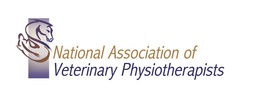|
Canine Elbow dysplasia is a condition that affects many breeds, particularly young medium to large-sized dogs. Unfortunately, treatments remain relatively limited which is a concern for dog owners and breeders alike. Therefore, it is a common question to ask whether Elbow Dysplasia in dogs is genetic. What is Elbow Dysplasia?Elbow dysplasia is an abnormal development of the elbow joint. This results in the early development of osteoarthritis and degenerative changes. The condition is the result of a dog’s elbow joint failing to develop correctly. This prevents its components from working properly together. Types of Elbow DysplasiaThere are three main types of elbow dysplasia conditions that dogs usually suffer from. These are:
Is canine elbow dysplasia genetic?To put it short, yes. The tendency towards elbow dysplasia is usually passed down from a dog’s parents. What dog breeds are most at risk for elbow dysplasia?Elbow dysplasia is most prevalent among certain breeds of dogs., even some of the most popular breeds such as the Labrador Retriever have high rates of the disease. Overall, elbow dysplasia is mostly found in medium and large breeds. A recent study has shown that the following breeds are more susceptible to elbow diseases (including elbow dysplasia). These are:
The gender of the dog can also have an impact. The study showed males have one a half times the risk of developing an elbow disease than females. There are even some breeds such as the Jack Russell terrier and West Highland white terrier that the study showed to actually have reduced risk of elbow disease compared to the average crossbreed dogs. What can breeders and owners do?Whilst the risk of elbow dysplasia cannot be eradicated completely, there are some things that breeders can do to help limit the risk. Often this was done by mating together dogs that are free from the condition. Smart breeding decisions like this make it far less likely that the dog will develop dysplasia. Although the condition is genetic to a degree, there are still environmental factors that can increase the risk of the disease which owners must be aware of. Lack of exercise, poor nutrition and dog obesity can all increase the risk of the dog developing elbow dysplasia at some point during their lifetime. What are the early signs of canine elbow dysplasia?Symptoms can start to show in the dog when they are relatively young at around 5 months. Therefore it is important that tests are done as soon as symptoms start to show. Undertaking a CT scan can help diagnose the condition. The symptoms can vary but include noticing that your dog struggles to bear weight on a certain paw. Or if you notice that a paw is turning outwards more than the others. Other symptoms include walking in a stiff manner, especially after exercise, and a reluctance to exercise in the first place. Whilst there may be a myriad of other reasons why these symptoms have occurred, it is imperative that tests are undertaken in order to rule out elbow dysplasia or catch it as soon as possible. What is the prognosis of elbow dysplasia in dogs?Discomfort can be eased by ensuring the dog maintains a healthy weight and takes regular, short walks on a lead to avoid overexertion and worsening the condition. Try and ensure the dog doesn’t run or jump too much. Also, consider your surroundings. Adapt your home accordingly to ensure your dog remains comfortable and reduce the risk of falls.
In some cases, anti-inflammatories or painkillers can be prescribed and in certain cases. A combination of surgery or physiotherapy may be the best route to explore. We hope we have answered the question is Elbow Dysplasia in dogs genetic. Whilst elbow dysplasia is a painful, long-term condition, the positive news is that it shouldn’t shorten the dog's life. By ensuring the dog’s discomfort is lowered through a healthy lifestyle, the dog can still enjoy a great quality of life. If you are concerned about your dog having elbow dysplasia then ensure you visit a trained veterinary professional for an early diagnosis.
0 Comments
|
AuthorNAVP Archives
June 2024
Categories
All
|
The Association |
Services |
|


 RSS Feed
RSS Feed